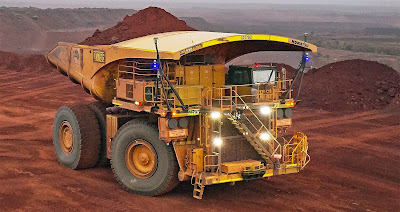For the second part of the investments review, I am looking at our long-only large cap equities funds. Usually, I would divide these into Australian large cap, U.S., and rest of world equities, but Hearts and Minds spans all of these and Generation the last two. The funds all have strong IRRs. Note that the IRR of an investment depends both on its underlying performance and our trading and timing.
Hearts and Minds (HM1.AX). Share of net worth: 4.13%. IRR: 27.52%. This fund invests across Australia and global markets by picking the best ideas of a set of fund managers. 35% of the portfolio is allocated according to the stocks pitched at the annual Sohn Hearts and Minds Conference. 65% is allocated according to the best ideas of six core fund managers: Caledonia Investments, Cooper Investors, Magellan Financial Group,
Paradice Investment Management, Regal Funds Management, and TDM Growth
Partners. Instead of charging management fees, the fund contributes 1.5% of NAV to charity every year. Since inception, this fund has performed very well. On the other hand, it has been weaker this year as the conference stocks this time are mostly high growth stocks, which are now falling out of favor:

The China Fund (CHN). Share of net worth: 1.77%. IRR: 16.00%. This is a closed-end fund investing in Chinese stocks. There have been changes of manager over time and the latest manager seems to be doing well:
The reason to hold this fund is to tilt towards exposure to emerging markets. I think our diversified funds have a relatively low exposure to emerging markets, though it's impossible to get that information for most of them. OTOH, one of our "hedge funds", Platinum Capital has a 17% allocation to China and Hong Kong and 2% to India. So, this seems a good fund to get that exposure through. But is almost one third of our allocation to "rest of the world stocks" too much?
Generation Global Fund. Share of net worth: 1.60%. IRR: 16.50%. This fund is hosted on the Colonial First State platform and is closed to new investors. We are automatically adding AUD 400 to this fund every month. The question is whether to raise that or stop contributing to funds outside of super altogether. The fund is managed by Generation Investment Management, who are an ESG fund manager. Compared to the MSCI World Index it has a beta of 1.11 and annual alpha of 3.2% over the last five years. So, this is a good long-only fund.
Fortescue Metals (FMG.AX). Share of net worth: 1.60%. IRR: Too new. I very recently switched out of Treasury Wines and into this stock, which so far has been a very bad move. I guess I just like to do some trading with a small part of the portfolio. I am hoping this will pay nice franked dividends and that I at least won't lose capital value in the long term.
Colonial First State Imputation Fund. Share of net worth: 0.99%. IRR: 18.00%. This fund invests in large cap Australian stocks with strong "franked" dividends. There is little logic to hold both this fund and Argo Investments... Argo has a much lower management fee. On the other hand, this fund has outperformed the benchmark on many time scales despite the high management fee (0.96%):
So, if we retain this account, then I think this fund makes sense as one of the investments.
Berkshire Hathaway (BRK/B). Share of net worth: 0.87%. IRR: 9.80%. My thesis for investing in Berkshire is here. Berkshire is providing more exposure to the US market in the SMSF.
Argo Investments (ARG.AX). Share of net worth: 0.79%. IRR: 23.03%. This is a closed end fund (listed investment company) investing in mainly large cap Australian shares. The expense ratio is only 0.15%! Timing has boosted our IRR for this fund... The fund has outperformed the benchmark recently and over 20 years, but not over the interim time frames:
So, maybe this isn't such a good idea? I recently
invested again in this fund to get more exposure to the Australian market after rolling over my Colonial First State superannuation fund into the SMSF. Note that the share price performed poorly recently as the premium to NTA fell, after which we purchased the fund.















